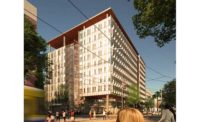L.A. Metro Manages $10B in Design-Build Projects






















With nearly $10 billion in construction under way or approved, the Los Angeles County Metropolitan Transportation Authority (Metro) is moving full speed ahead with a number of projects to meet the growing travel demands of the 9.6 million people living within its 1,433-sq-mile service area.
To keep such a large volume of work on time and within budget, the agency relies on open communications with its contractors and proven project delivery systems such as design-build. Because of its ability to efficiently meet public infrastructure needs, Metro was chosen as ENR California's Owner of the Year.
Open Lines of Communication
"Metro operations and engineering folks are transit professionals, and we communicate very openly and honestly with them," says Mike Aparicio, executive vice president with Skanska USA Civil's Riverside office. "They appreciate detailed discussions on both engineering and operations aspects of the work."
Aparicio, who is a project executive on Metro's $1.5-billion Expo Phase 2 light rail line from Culver City to Santa Monica as part of a Skanska-Rados joint venture, says the agency's "open and honest communication is important because it helps to propel the jobs faster, with quicker delivery."
For example, on the 6.6-mile-long design-build Expo light rail project, he points to a last-minute request from the city of Santa Monica that asked for one of the seven new stations to be moved about 300 ft toward the sidewalk to improve accessibility.
"This request came midstream in the project, and Metro's systems and operations folks worked hand in glove with our design and construction team to accommodate the city," Aparicio says.
"Some owners would have said, 'No, we are not going to allow them to move it because it disrupts our transit operations,' but Metro's attitude was, 'Let's do it for the community,'" Aparicio says. "So we came up with a really good design that is more user-friendly and still satisfies Metro's requirements."
Metro's Charles Beauvoir says his agency's open communication policy spills into its use of design-build, which encourages bidding contractors to be creative.
"One of the great benefits of design-build is the innovation that different contractors can bring," says Beauvoir. They each have their "own schemes and methods." To facilitate new ideas and design "alternatives that are outside the box," Metro offers them a stipend, Beauvoir says. If it proves to be an effective, cost-saving plan, Metro can use it again on future projects.
Such was the case on the $2.1-billion Crenshaw/LAX Transit Project, an 8.5-mile-long light rail with eight stations extending from Southwest Los Angeles to the city's airport. The line is currently under construction and heading for a 2019 completion.













